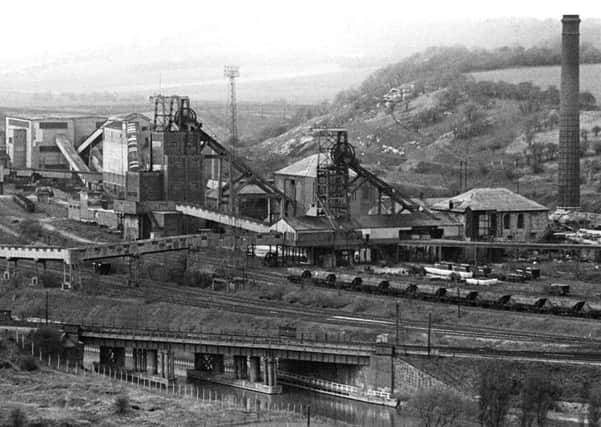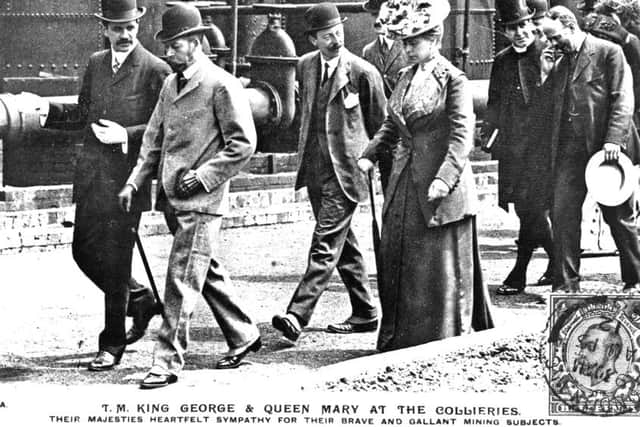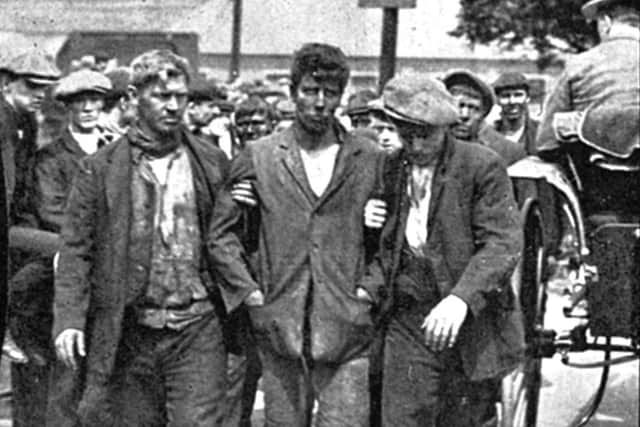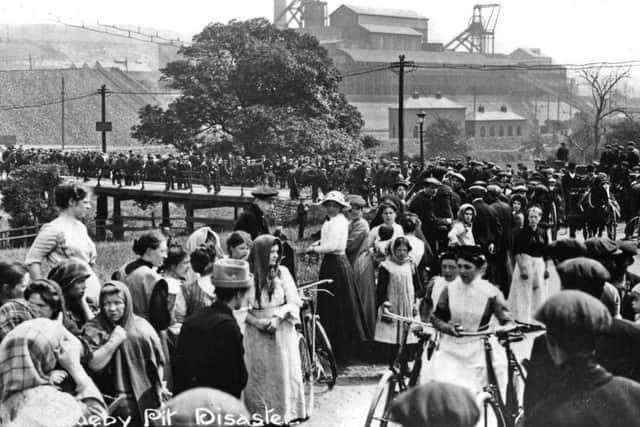Pit of tragedies


A terrible tragedy, a visit by a King and Queen and a failed ecological adventure. However, it still provides a base for employment in the Dearne Valley’s uneasy economic climate.
The Denaby Main Colliery Co. was responsible for establishing the colliery and the first sod was cut on 25 March 1889. Sinking to the Barnsley Seam was not completed until November 1893. At that time, Cadeby was the deepest and most easterly in Yorkshire. Initially, workmen at the colliery were ferried across the River Don in a boat but in May 1892 a bridge was built.
Advertisement
Hide AdAdvertisement
Hide AdAt the beginning of the 20th century, the combined workforce of Denaby and Cadeby Collieries totalled some 4,000 men and many lived in the company’s houses. In 1902-3 when the ‘Bag Muck Strike’ occurred, evictions brought enormous publicity to the area. The cause of the strike was over the payment for removing ‘bag muck’ an uneven layer of rock running through the Barnsley seam. By the time the strike was 26 weeks old some of the families had fled. Then the colliery company was granted eviction orders against 750 tenants. Friday, January 9, 1903, saw the evictions complete. Snow fell and people were housed in chapels, school rooms and tents. On February 5 and 6, the colliery company announced the re-opening of both Cadeby and Denaby Main pits and advertised for labour. On March 22, 1903, most of the men returned to work, dejected and betrayed. But as one miner put it: ‘Better to have strived and lost than not to have strived at all.’


A national coal strike beginning on Friday March 1, 1912 and involving three-quarters of a million men, aimed to win a minimum wage for each coal mining district. In the Yorkshire coal field no coal was drawn anywhere after four o’clock on Thursday afternoon February 29. The Cadeby Colliery men, some of whom were to be depicted in a unique series of ‘strike’ postcards by a local photographer, ceased work at the end of Wednesday morning’s shift. After 40 days and a national ballot the miners returned to work. This latter was precipitated by the passing of the Coal Mines (Minimum Wages) Act 1912. This stipulated that in future, minimum wages were to be negotiated by local boards with a neutral chairman.
Early on Tuesday morning July 9, 1912, there was a huge explosion in the south district of Cadeby Colliery. Out of the 37 men who were working in the south district, 35 lost their lives. The dead were carried out of the pit and down the long gantries in full view of up to 80,000 onlookers. Only hours after the first explosion a second one occurred around 11.30 am, the death toll leaping from 35 to 75.
Later on the disaster day, the King and Queen, undertaking a tour of South and West Yorkshire, motored over from Wentworth. Next morning there were VIP visitors, including the Archbishop of York. When he left the Colliery yard, he made a tour of Denaby and Conisbrough, visiting mourning families.
Advertisement
Hide AdAdvertisement
Hide AdRescue workers narrowly escaped another catastrophe, as a third explosion made them scurry for their lives. Two men sustained serious injury.


During the 1926 General Strike the Conisbrough and Denaby Distress fund provided meals, twice a week from eight centres. About 8,000 dinners were provided each week. Shortly after the year-long 1985-1985 Miners’ Strike, news was announced, early in March, 1986, that the NCB was to axe Cadeby Colliery. The pit, which five years earlier had employed 1,200 men, was expected to make a loss of £3.4m. Harold Taylor, NCB South Yorkshire Area Director, guaranteed jobs for the 321 staff if they wanted to remain in the mining industry. More than 7,800 South Yorkshire miners had already accepted redundancy.
On December 24, 1986, those men who decided to take redundancy left Cadeby. Only a skeleton workforce returned after the Christmas break fill in shafts and assist in the demolition of buildings. In October 1987 15-year-old Lee Johnson was given the chance to press the demolition button at Cadeby as a prize in a raffle organised as part of a £20,000 scheme to raise money for a miners’ memorial chapel.
Following clearance of the Cadeby colliery site work began on the initial stages of the Earth Centre which was intended to ‘establish a world centre for sustainable development promoting the best environmental and sustainable practice’. The first stage opened in 1994, and included an aquaculture centre and a community farm. A year later the Millennium Commission awarded £41.6m to Earth Centre which became one of its Landmark Millennium projects.
Advertisement
Hide AdAdvertisement
Hide AdFrom 1996 work progressed on the remediation of the remaining land and the design and construction of the many buildings and exhibitions.


Phase 2 of the Earth Centre opened in May 2001 with more attractions. A pirate ship was built, a crazy golf course and indoor ‘Amazon Adventure’ play area.
By 2003 it was realised the target visitor numbers were not being met, and by 2004, it was evident that the centre was not viable. In September 2004 the attraction closed to the public, and by the end of October, the Earth Centre was put in the hands of administrators. The Centre was put up for sale in October 2010 and in March 2011, was sold for an undisclosed sum.
The site is currently occupied by Kingswood, an educational activity services provider.
Thanks to Hugh Parkin for help with this piece.